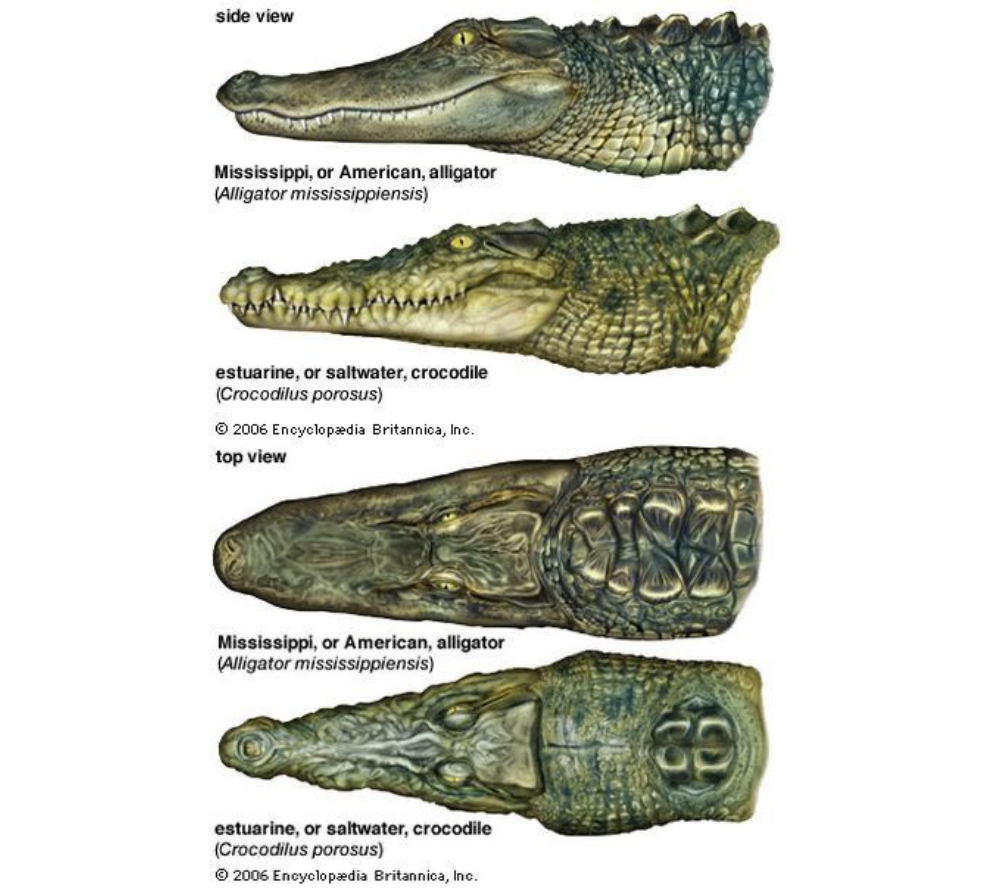Image Content Description:
This image is a comparative illustration from the 2006 Encyclopedia Britannica, showcasing the Mississippi (American) Alligator (Alligator mississippiensis) and the Estuarine (Saltwater) Crocodile (Crocodylus porosus) from both side and top views. The visual comparison highlights key anatomical differences between these two large reptiles.
Key Details & Comparisons:
1. Species Shown:
-
Mississippi Alligator (Alligator mississippiensis):
-
Native to the southeastern U.S. (freshwater habitats like swamps and rivers).
-
Broader, U-shaped snout.
-
Darker coloration (black/gray).
-
-
Estuarine Crocodile (Crocodylus porosus):
-
Found in Southeast Asia, Australia, and the eastern Indian Ocean (saltwater/brackish habitats).
-
Narrower, V-shaped snout.
-
Lighter coloration (tan/greenish-gray).
-
2. Visual Perspectives:
-
Side View:
-
Highlights body shape, limb placement, and tail structure.
-
Crocodile’s fourth tooth on the lower jaw is visible when mouth is closed (alligator’s is hidden).
-
-
Top View:
-
Emphasizes skull and snout differences:
-
Alligator: Wider, rounded snout.
-
Crocodile: Longer, tapered snout.
-
-
3. Scientific Names:
-
Alligator: Correctly listed as Alligator mississippiensis.
-
Crocodile: Listed as Crocodilus porosus (outdated spelling); modern taxonomy uses Crocodylus porosus.
Purpose & Educational Value:
-
Comparative Anatomy: Demonstrates how snout shape correlates with habitat and diet:
-
Alligator’s broad snout = stronger bite for crushing turtles/small mammals.
-
Crocodile’s narrow snout = suited for fish and larger prey.
-
-
Taxonomic Clarity: Helps distinguish between alligators and crocodiles (common confusion).
Notable Omissions (if critical):
-
Size comparison (Saltwater crocodiles are larger; males can exceed 20 ft).
-
Behavioral differences (e.g., crocodiles are more aggressive).
Suggested Improvements:
-
Update scientific name to Crocodylus porosus.
-
Add a scale bar or size reference.
-
Include brief captions about habitat/diet.

